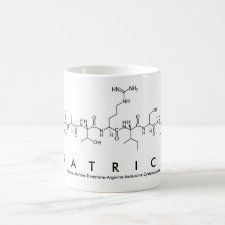
Authors: Peeters M, Kobben S, Jiménez-Monroy KL, Modesto L, Kraus M, Vandenryt T, Gaulke A, Van Grinsven B, Ingebrandt S, Junkers T, Wagner P
Article Title: Thermal detection of histamine with a graphene oxide based molecularly imprinted polymer platform prepared by reversible addition-fragmentation chain transfer polymerization.
Publication date: 2014
Journal: Sensors and Actuators B: Chemical
Volume: 203
Page numbers: 527-535.
DOI: 10.1016/j.snb.2014.07.013
Alternative URL: http://www.sciencedirect.com/science/article/pii/S0925400514008417
Abstract: Graphene oxide (GO), with its small dimension and high surface-to-volume ratio, can enhance the binding capacity and sensitivity of molecularly imprinted polymers (MIPs). Therefore, a straightforward and fast method was developed to graft MIPs onto GO by reversible addition-fragmentation chain transfer (RAFT) polymerization. First, the initiator was linked to the GO in a simple two-step process which was verified via UV-vis spectroscopy. Subsequently, a MIP layer for histamine was grown onto the functionalized surface by RAFT crosslinking polymerization, enabling control over the imprint structure. The formation of a hybrid GO-MIP structure, particles surrounded with a polymer network of ~2.4 nm thick, was verified by atomic force microscopy (AFM). Classical batch rebinding experiments demonstrated the specificity of the MIP towards its original template histamine. Next, the heat-transfer method (HTM) was applied, a novel sensing technique requiring only two thermocouples and an adjustable heat source. This method has been employed for the detection of small organic molecules with bulk MIPs, but never with a GO-hybrid structure. For proof-of-principle purposes, silicon substrates were functionalized with the GO-MIPs and sensing was performed on histamine in buffer solutions. The designed sensor platform could detect histamine in the nanomolar regime, similar to conventional techniques. In summary, we have developed a fast and straightforward method to prepare MIP-GO hybrids which were able to measure histamine in buffer solutions by thermal detection. Since GO exhibits excellent thermal properties, this opens the window to sensing of small organic molecules in relevant biological samples
Template and target information: histamine
Author keywords: molecularly imprinted polymers (MIPs), heat-transfer method (HTM), histamine, atomic force microscopy (AFM), Graphene oxide (GO), Reversible addition-fragmentation chain transfer (RAFT) polymerization



Join the Society for Molecular Imprinting

New items RSS feed
Sign-up for e-mail updates:
Choose between receiving an occasional newsletter or more frequent e-mail alerts.
Click here to go to the sign-up page.
Is your name elemental or peptidic? Enter your name and find out by clicking either of the buttons below!
Other products you may like:
 MIPdatabase
MIPdatabase









